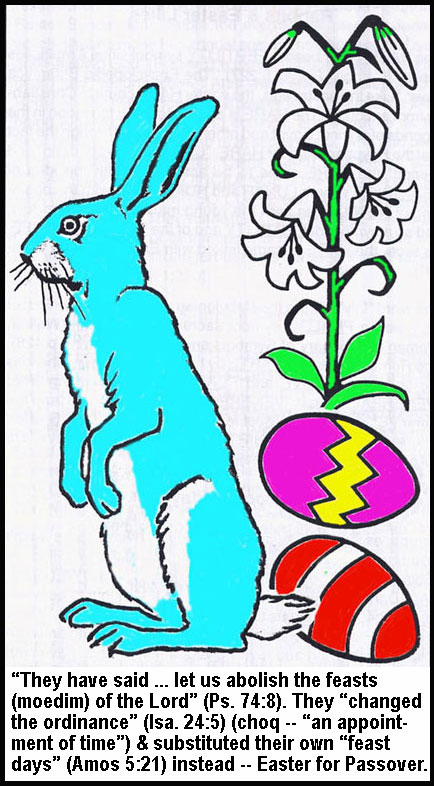
What's Wrong With EASTER?
The word "EASTER" is
derived from the fertility goddess ASHTAROTH, the wife of Baal
(Judges 2:13). Her Babylonian name is ISHTAR or Semiramis -- the
original Babylonian queen who ruled over the kings of the earth (Rev.
17:1-2), cleverly disguised as "Mary," the mother of Jesus today.
When Catholics worship Mary, they are merely continuing the ancient heathen
worship of Venus, of Isis, of Cybele, of Aphrodite and of Ishtar who were
all ancient mothers of the gods. But the Bible warns, "Make NO
MENTION of the name of other GODS" (Ex. 23:13). "Do
not inquire after their gods, saying, 'How did these nations serve their
gods?' ... You shall not do so to the Lord your God; for every abominable
thing which the Lord hates have they done for their gods" (Deut.
12:30-31).LUCIFER
is called "MORNING STAR" (NEB) in Isaiah 14:12. LUCIFER
is the Latin name for VENUS, the Morning Star (Mythology
Of All Races, vol.6, p.260). Plato's name for LUCIFER,
or the morning star, was ASTER ("Star"), another form
of ISHTAR ("Star") (Woman's Encyclopedia of Myths
and Secrets, Walker, p.70) or ASTARTE or ASHTORETH or
EASTER. "For Satan himself masquerades as an angel of light"
(2 Cor. 11:13)...![]() hat
do colored EASTER EGGS have to do with the resurrection? What do
bunny RABBITS have to do with the crucifixion? Where did the custom
of eating HOT CROSS BUNS come from? Why attend an EASTER SUNRISE
service? Why observe 40 days of abstinence called LENT? What's
so "good" about "GOOD FRIDAY"? How do we get
“THREE DAYS” between “GOOD FRIDAY”
and “EASTER SUNDAY”?
hat
do colored EASTER EGGS have to do with the resurrection? What do
bunny RABBITS have to do with the crucifixion? Where did the custom
of eating HOT CROSS BUNS come from? Why attend an EASTER SUNRISE
service? Why observe 40 days of abstinence called LENT? What's
so "good" about "GOOD FRIDAY"? How do we get
“THREE DAYS” between “GOOD FRIDAY”
and “EASTER SUNDAY”?
Jeremiah wrote, "Learn not the way of the heathen ... for the customs of the people are vain" (Jer. 10:2). "For the mystery of iniquity doth already work" (2 Th. 2:3,7). "Let no man deceive you by any means; for that day shall not come except there come a FALLING AWAY first" (2 Th. 2:3). "Take heed that no man DECEIVE you. For MANY shall come in my name, saying I am Christ; and shall DECEIVE MANY" (Matt. 24:4-5) -- "speaking PERVERSE things" (Acts 20:30) "and MANY shall follow their PERNICIOUS ways" (2 Pet. 1:2) "turning the grace of God into LASCIVIOUSNESS" (Jude 3,19) "and they shall turn away their ears from the truth, and shall be turned unto FABLES" (2 Tim. 4:3-4). They "call evil good, and good evil" (Isa. 5:20) and "they have made VOID thy law" (Ps. 119:126).
Ashtaroth
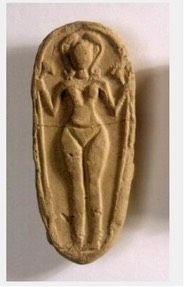
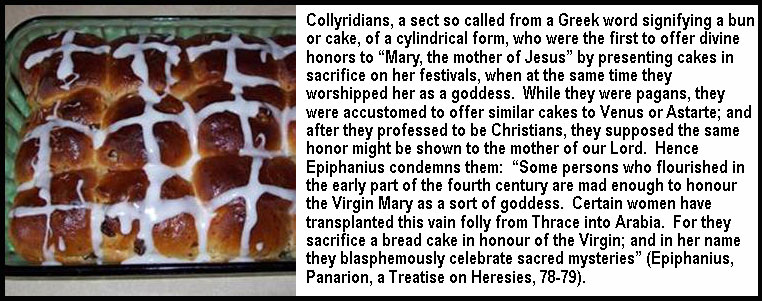
Hot Cross Buns
They
worshipped ISHTAR, the "queen of heaven," using ROUND
wafers or "cakes" at communion (Jer. 44:17-19; Jer. 7:18), an
image for the SUN. The word "cakes" is translated from
the Hebrew word "kavan" and can be rendered "BUNS."
Round HOT CROSS BUNS originated in Babylon. "The Greeks offered
such sacred cakes to ASTARTE ... (which) they called bous (ox),
in allusion to the ox-symbol marked on it, and from the accusative boun
it is suggested that the word 'BUN' is derived" (Encyc.
Brit. 4:796). The cross on the bun is the letter "T"
-- the initial of the SUN-god TAMMUZ. Actually, one of Mithra's
signs was a cross formed by the ecliptic and celestial equator at the
EQUINOX (Plato's Dialogue, Timaeus).
The cross with a circle around it is the ancient symbol for the Babylonian
sun deity (Goldsmith's Ancient Pagan Symbols, pp. 42-43). "Hot-cross" buns were baked and offered to the goddess (Encyclopedia of Religion and Ethics, vol. 2, p. 34 and Symbolik, W. Menzel, p. 180).
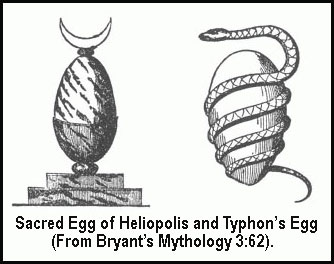
Easter Eggs
Spring fertility customs to honor ISHTAR included COLORED EGGS, bunny RABBITS, HOT CROSS BUNS, LENT, and SUNRISE SERVICES. "The egg as a symbol of fertility and of renewed life goes back to the ancient Egyptians and Persians, who had also the custom of coloring and eating eggs during their spring festival" (Encyc. Brit. art "Easter"). God says, "I despise your feast days" (Amos 5:21). "Woe unto them that call evil good, and good evil" (Isa. 5:20). Hyginus, an Egyptian, says, "An EGG of wondrous size is said to have FALLEN from HEAVEN into the River Euphrates.... out came VENUS (Ishtar), who afterward was called the Syrian Goddess (Hyginus, Fabulae pp.148-149). Acts 19:35 says the goddess DIANA (Ishtar) "FELL down from Jupiter." Then in Luke 10:18 we read that Christ "beheld SATAN as lightning FALL from HEAVEN." Therefore, the worship of DIANA or ISHTAR is SATAN worship. Yet how many "Christians" have EASTER-EGG hunts?
"Good Friday"
It was TAMMUZ,
a "Babylonian and Assyrian god, who died and rose annually with dying
and reviving vegetation (that) ... gave birth to (a counterfeit) Christianity"
(Encyc. Brit. 14th ed. 21:776-777). Speaking of Dionysus' death
and resurrection, "Greece had what we may call its Good Friday and
Easter Sunday long before the events took place in Judaea which diffused
these two annual commemorations of the Dying and Reviving God" (Frazer
The Golden Bough 7:33). "Now the death and resurrection of
Attis were officially celebrated at Rome on the twenty fourth and twenty
fifth of March, the latter being regarded as the spring equinox, and therefore
as the most appropriate day for the revival of a god ... who had been
dead" (Frazer Adonis, Attis, Osiris 1:306). As Frazer says, "Taken
altogether, the COINCIDENCE of the Christian with the HEATHEN
festivals are TOO CLOSE and TOO NUMEROUS to be accidental.
They mark the COMPROMISE which the Church in the hour of its triumph
was compelled to make with its vanquished yet still dangerous rivals"
(of paganism) (Frazer's Adonis, Attis, Osiris, 1:310).
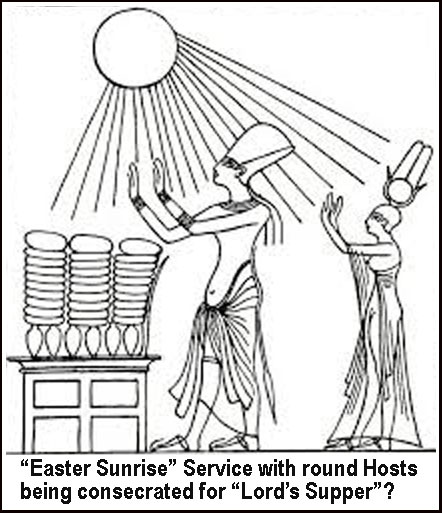
Easter
Sunrise Services
Prophets of Baal called on their Sun-god in the "MORNING" (1 Kings 18:26). Ezekiel mentions "women weeping for Tammuz ... and they worshipped the SUN toward the east" (Ez. 8:14-16). He is describing EASTER SUNRISE services on SUNDAY morning. This may be why God says in Hosea 2:14-17 that Israel "shall no more call me BAALI." When worshippers mention Jesus' name at EASTER, aren't they calling him "BAALI"? Tertullian in 197 A.D. accused fellow Christians of Sun-worship because of their praying to the EAST and because of making SUNDAY a day of festivity (Ad Nationes 1,13) (Ante-Nicene Fathers 3:123). About 325 A.D., at the Council of Nice, Roman Catholics made EASTER the resurrection day, and the date was set at the first Sunday following Passover.
“Three
Days and Three Nights”
Jesus warned us against making "the Word of God of none effect through your TRADITION" (Mark 7:13). Jesus wasn't resurrected on Easter Sunday (Matt. 28:1) or crucified on
"Good Friday." Jesus was cut off "in the MIDST of the week" (Dan. 9:27) -- a WEDNESDAY -- after a three-and-a-half year ministry. The crucifixion occurred from 9 A.M. to 3 P.M. -- from the "THIRD HOUR" (Mark 15:25) "until the NINTH HOUR" (Mark 15:33-37) of WEDNESDAY. This WEDNESDAY was "THE PASSOVER" (Matt. 26:2) -- when LAMBS were SLAIN and the BLOOD was put on doorposts COVERING the MEZUZAH LAW. Then he was buried BEFORE SUNSET (Matt. 27:57; Luke 23:52-54) to comply with the day of preparation since they had to prepare for an annual
Sabbath "high day" (John 19:31) THURSDAY (Feast of Unleavened Bread). After "the sabbath was past", the two Marys bought their spices -- on a FRIDAY (Mark 16:1; John
19:31) -- and prepared those spices before the weekly Sabbath -- SATURDAY
(Luke 23:56; 24:1). Two different Sabbaths. Then the women "rested the sabbath day (SATURDAY) according to the commandment" (Luke 23:56). Then came the Sabbath resurrection
after 3 P.M. on SATURDAY (Matt. 28:6). It had to be after 3 P.M. in order
to complete three days in the tomb (Jonah 1:17; Matt. 12:39-40; 27:63;
Mark 8:31; 9:31; John 2:19). Then Mary Magdalene came to the sepulcher
“when it was yet dark” on SUNDAY and found it EMPTY (John
20:1-9). Apparently she came just before sunrise since Mark 16:2 adds:
“very early in the morning of the first day of the week (SUNDAY),
they (the two Marys) came unto the sepulcher at the rising of the sun.”
But it was EMPTY. Christ “IS RISEN” (Mark 16:6) "AS HE SAID" (Matt. 28:6). Then Mark
16:9 reads “Now when Jesus HAD RISEN (comma should be inserted here
since this is the complete thought) early on the first day of the week
(comma should be removed from here since this is part of the next complete
thought) he appeared first to Mary Magdalene.” The use of commas
and other punctuation marks were completely unknown until they were developed
and inserted by Aldus Manutius about 14 centuries after this Greek text
was written. (see The Centenary Translation by Montgomery).
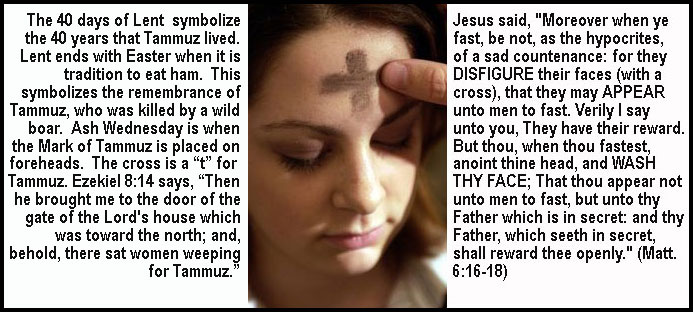
Lent
"The forty days’ abstinence of Lent was directly borrowed from the worshippers of the Babylonian goddess. Such a Lent of forty days, ‘in the spring of the year,’ is still observed by the Yezidis or pagan Devil-worshippers of Koordistan, who have inherited it from their early masters, the Babylonians. Such a Lent was held by the pagan Mexicans, in honor of the sun. Such a Lent was observed in Egypt (Wilkinson’s Egyptians). This Egyptian Lent of forty days was held expressly in commemoration of Adonis or Osiris, the great mediatorial god.” (The Two Babylons, by Hislop, pp. 104-105, and Sabean Researches, by Landseer, p. 112).
Rabbits & Easter Lilies
The RABBIT has been
a FERTILITY symbol since it multiplies rapidly (Catholic Encyc. 5:227).
The Encyclopedia Britannica gives us more clues as to why the RABBIT is
associated with the Easter season, "Like the easter egg, the easter
HARE came to Christianity from antiquity. The HARE is associated with
the moon in the legends of ancient Egypt and other peoples ....Through
the fact that the Egyptian word for HARE, “UM,” means also
"open" and "period" the HARE came to be associated
with the idea of PERIODICITY, both LUNAR and HUMAN, and with the beginning
of NEW LIFE in both the young man and young woman, and so a symbol of
FERTILITY and of the RENEWAL of LIFE. As such, the HARE became linked
with Easter...." (Article Easter"). The word "Lily"
is from the Babylonian word "Lilu." The Easter LILY was a PHALLIC
symbol sacred to ASTARTE (Walker, Woman's Dictionary of Symbols and Sacred
Objects, p.428). The Romans called ASTARTE by the name VENUS. She was
the goddess of LOVE and FERTILITY. Our modern words "VENEREAL"
and "VENEREAL disease" come from VENUS. Her greatest festival
was in the SPRING when nature was having its RE-BIRTH. But Jeremiah 10:2
says, "Do not learn the way of the heathen.
The Crucifix
Alexander Hislop in the Two Babylons, pp.197-205 calls the cross "this Pagan symbol ... the Tau, the sign of the cross, the indisputable sign of Tammuz, the false Messiah ... the mystic Tau of the Chaldeans (Babylonians) and Egyptians -- the true original form of the letter T -- the initial of the name of Tammuz ... the Babylonian cross was the recognized emblem of Tammuz." Isaiah 44:13,15 mentions the CRUCIFIX: "The carpenter ... shapes it into the figure of a man ... he makes a god and worships it." The CRUCIFIX existed long before 31 A.D. when Jesus was executed. Jesus was nailed to a horizontal STAKE ("stauros" in Greek) which was then attached to a vertical STAKE ("stauros" in Greek) already in the ground.
The Babylonian account
of the crucifixion goes like this: "Ishtar had her divine son, Tammuz,
crucified, buried and then resurrected. And at the crucifixion Ishtar
'stood the cross beside'" (Graham's Deceptions and Myths of the
Bible, p.348). The Phrygian celebration of the crucifixion is described
as follows: "On the 22nd March (the Vernal Equinox) a PINE-TREE
was cut in the woods and brought into the Temple of Cybele. It was treated
almost as a divinity, was decked with violets, and the EFFIGY of
a young man (Attis) tied to the stem (cf. the CRUCIFIXION). The
24th was called the "Day of BLOOD."; the High Priest
first drew BLOOD from his own arms; and then the others gashed
and slashed themselves (cp. 1 Ki. 18:28), and spattered the altar and
the SACRED TREE with BLOOD; while novices made themselves
eunuchs ...The EFFIGY was afterwards laid in a TOMB. But
when night fell, says Dr. Frazer, sorrow was turned to joy. A light was
brought, and the tomb was found to be EMPTY. The next day, the
25th, was the festival of the Resurrection; and ended in carnival and
license (the Hilaria) ... (including) a sacramental meal and a baptism
of blood" (Frazer's Golden Bough p.229).
Tertullian defended Catholicism by saying to the pagans, "The origin
of your gods is derived from figures moulded on a cross. All those rows
of images on your standards are the appendages of crosses" (Doane,
Bible Myths, p.198). There have been at least 16 counterfeit "saviors"
who died on a cross before Jesus (Graves' The World's Sixteen Crucified
Saviors, p.30; Doane's Bible Myths, p.191). (Krishna of India
1200 B.C., Sakia 600 B.C., Syrian Tammuz 1160 B.C., Wittoba 552 B.C.,
Iao of Nepal 622 B.C., Hesus of Druids, 834 B.C.,, Mithra of Persia 600
B.C., Mexican Quexalcotl 587 B.C., Quirinus of Rome 506 B.C.,Prometheus
547 B.C.,, Thulis of Egypt 1700 B.C., Indra of Tibet 725 B.C., Alcestos
of Euripides 600 B.C., Attis of Phrygia 1170 B.C., Crite of Chaldea 1200
B.C., and Bali of Orissa 725 B.C., Odin in Scandinavia). Minucius Felix,
a Catholic Church "father" of the third century, makes a very
revealing statement when he vehemently denied that Christians worshipped
the cross: "You it is, you Pagans, who are the most likely people
to adore wooden crosses ... You adore crosses of wood because they form
part of your gods. And, surely, your military ensigns, standards and banners,
what are they but gilded (gold) and decorated crosses? Your trophies of
victory copy not merely the appearance of simple cross, but that of a
MAN FASTENED TO IT as well." (The Octavius of Marcus Minucius
Felix, pp.106-107).
The Scarecrow
In fact, the SCARECROW is one custom that came from a pre-Christian
CRUCIFIED "savior," whom the Romans called PRIAPUS,
and has been the FERTILITY god of gardens for millenia (See Jer.
10:5, RSV; Virgil Georgics 4:111; Suetonius' On Grammarians
XI). "Their idols are like SCARECROWS in a cucumber field,
and they cannot speak; they have to be carried, for they cannot walk ..."
(Jer. 10:5; RSV).
Cannibalism Became Communion
Cain thought he was the "Lord " since Eve exclaimed "I
have gotten a man, a lord" (Gen.4:4). The name Cain came to mean
"cohen" or "priest." Cain developed his own religion
after being cut off from God. He thought he was the Savior. He created
a priesthood. Since the name "CANNIBAL" (Cahna Baal)
is a word which means "Baal Priest" and may be derived from
the name "TUBAL-CAIN," some have concluded that Tubal-Cain
was a descendant of this priesthood of Cain and that the religion of Cain
had to do with CONSUMING of HUMAN FLESH -- mostly LITTLE
CHILDREN. When Tubal-Cain's sister/wife Naamah married Noah, this
Baal religion came through the flood. How else would Naamah learn about
the false religion unless her brother was a priest of Cain? She came to
be known as Naamah Isis, or NEMISIS, because she betrayed Noah
by getting him drunk. She is the original prototype of the harlot of Revelation
sitting on Babylon holding a cup of wine for the world to get drunk. She
founded the Babylonian Mystery Religion with Ham's help. Their grandson
was Nimrod. "Nimrod, as the representative of the devouring fire
to which human victims, and especially CHILDREN, were offered in
SACRIFICE, was regarded as the great CHILD-DEVOURER ...
he was, of course the actual father of all the Babylonian gods; and, therefore,
in that character he was afterwards universally regarded. As the father
of the gods, he was called Kronos" (Lemp. Clas. Dict.,
Art. "Saturn") The literal meaning of BONFIRE is "BONE
FIRE" [M.E. bonefyre, bone fire, later funeral pyre] because
such a ritual fire came from the SACRIFICE of HUMANS. In
this context, the fiery VOLCANO may also derive its name from TUBAL-CAIN.
It was Solomon who was the first of the kings of Israel to allow the SACRIFICE
of CHILDREN. "For Solomon went after Ashtoreth the goddess
of the Zidonians, and after Milcom the abomination of the children of
Ammonites.... Then did Solomon build an high place for Chemosh, the abomination
of Moab, in the hill that is before Jerusalem, and for Molech, the abomination
of the children of Ammon" (1 Ki.11:3-7). This hill he built was in
the valley of the son of Hinnom. This area lies at the entry of the east
gate of Jerusalem (Jer.19:2). Psalm 106:28 says, "They joined themselves
also unto Baalpeor, and ate the sacrifices of the dead. Thus they provoked
him (God) to anger." (Eucharistic cannibalism). In Jeremiah 19:5-6
we read, "They have built also the high places of Baal, to BURN
their SONS with fire for burnt offerings unto Baal which I commanded
not, nor spake it, neither came it into my mind: Therefore ... this place
shall no more be called Tophet, nor the valley of the son of Hinnom, but
the valley of slaughter." They would place their children on the
arms of an idol extended over a flaming fire. The CHILDREN would
ROAST to DEATH as the priests blew trumpets to mask the
screams of the baby. In one such high place, an archaeologist found "great
numbers of jars containing the remains of CHILDREN who had been
SACRIFICED to Baal. The whole area proved to be a cemetery for
new-born BABES" (p.166, Halley's Bible Handbook; cp.
p.198). No wonder Elijah executed the prophets of Baal (1 Ki.18:40) and
Jehu exterminated Baalism (2 Ki.10). This is one reason God commanded
the nation of Israel to destroy the Canaanites (Deut.18:10-12). Life is
the gift of God (Ps.127:3). Only God has the right to give or take an
innocent life (Deut.32:39). He says, "Do not kill the innocent ...
for I will not acquit the guilty" (Ex.23:7).
Nimrod heard Noah preach about a coming Savior and so counterfeited everything.
Through trickery, Semiramis was able to persuade Nimrod to grant her the
rule of the kingdom for five days. Once in power, she was able to have
him put to death (Funk & Wagnall's Standard Dict. of Folklore,
Mythology and Legend, 2:981). Then at the Tower of Babel, this counterfeit
"savior" became 16 different counterfeit "saviors."
Nimrod perpetuated human sacrifice after the flood. The victim was crucified
and then his FLESH was EATEN and his BLOOD DRUNK
by priests of Baal known as Cannibals. The priests of Baal killed children
(Isaiah 57:5; Ezekiel 16:20; Tertullian Apologetics 9; Horace Epod. 5;
Procopius Gothica 1:25; Pausanias 9:8). Pliny praises the Roman people
for "having put an end to those monstrous rites" in which "to
murder a man was to do an act of the greatest devoutness, and to eat his
flesh was to secure the highest blessings of health" (Nat. Hist.
30:4). On the other hand, James Prescott relates how the Spanish missionaries,
when they first arrived in Mexico, found crosses worshipped in temples.
"Their surprise was heightened, when they witnessed a religious rite
which reminded them of Christian Communion" The communion in the
form of the Aztec sun-god deity "was made of the flour of maize,
mixed with blood, and after consecration by the priest, was distributed
among the people, who, as they ate it, 'showed signs of humiliation and
sorrow, declaring it was the flesh of the deity" (History of the
Conquest of Mexico, 3:369).As civilization progressed, substitutes took
the place of human sacrifice. The Satapatha Brahmana says, "in the
beginning the sacrifice most acceptable to the gods (sic) was man ...
for the man a horse was substituted, then an ox, then a sheep, then a
goat, until at length it was found that the gods (sic) were most pleased
with offerings of rice and barley." The sacramental food of Roman
Catholics is to this day called the "Hostia" -- like hostage
-- meaning "the victim." But today instead of a child it is
a small round cake (a Sun wafer) with a cross on it and reverently worshipped
as "Jesus" or "God." As the Catholic "saint,"
Alphonsus de Liguori wrote regarding the communion: "in obedience
to the words of his priests -- Hoc est Corpus Meum -- God himself descends
on the altar ... they may if they choose, eat his flesh, and give him
for food." It is from this that we get the magical phrase "hocus
pocus." An old custom at "Christmas" is to bake gingerbread
men and eat them. We believe this can be traced back to cannibalism and
human sacrifice.
Deuteronomy 12:28-32 says, "Observe and hear all these words which I command thee, that it may go well with thee, and with thy children after thee for ever, when thou doest that which is good and right in the sight of the Lord thy God. When the Lord thy God shall cut off the nations from before thee, whither thou goest to possess them, and thou succeedest them, and dwellest in their land; Take heed to thyself that thou be not snared by following them (X-Mass, Easter, Halloween), after that they be destroyed from before thee; and that thou enquire not after their gods, saying, How did these nations serve their gods? even so will I do likewise (X-Mass, Easter, Halloween). Thou shalt not do so unto the Lord thy God: for every abomination to the Lord, which he hateth, have they done unto their gods; for even their sons and their daughters they have burnt in the fire to their gods. What thing soever I command you, observe to do it: thou shalt not add thereto, nor diminish from it."
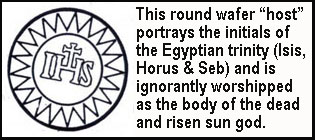
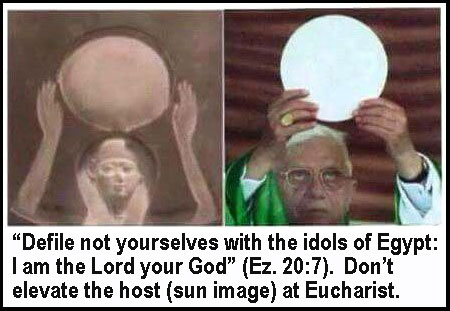
The Mass
When the Catholic priest blesses the bread and wine, he says the Latin
words, 'Hoc est corpus meus.' In view of the fact that no change takes
place, we can understand how the expression "HOCUS-POCUS" originated
with these words. After Jesus had blessed the cup, he still called it
"the fruit of the VINE" not literal BLOOD (Matt.26:29). Since
Jesus drank from the cup also, did he drink his own BLOOD? If the WINE
became actual BLOOD, to drink it would have been FORBIDDEN by the Bible
(Deut.12:16; Acts 15:20). The very idea of Christ "flesh and blood,
body and soul, Divinity and humanity" - being offered REPEATEDLY
as a "renewal" of the sacrifice of the cross, stands in sharp
contrast to the words of Jesus on the cross, "It is FINISHED"
(John 19:30). The Old Testament sacrifices had to be CONTINUALLY offered
because none of them were the perfect sacrifice. But now "we are
sanctified through the offering of the body of Jesus Christ ONCE for all.
For every priest standeth daily ministering and offering oftentimes the
same sacrifices, which can never take away sins:but this man (Christ),
after he had offered ONE sacrifice forsins for ever, sat down on the right
hand of God - for by ONE offering he perfected for ever them that are
sanctified" (Heb.10:10-14).
Passover
Became Easter
"In the DAYS OF UNLEAVENED BREAD Paul, coming down from Galatia, arrived in Asia, considering the repose among the faithful in Smyrna to be a great refreshment in Christ Jesus after his severe toil, and intending afterwards to depart to Jerusalem. So in Smyrna he went to visit Strataeas, who had been his hearer in Pamphylia, being a son of Eunice the daughter of Lois. These are they of whom he makes mention when writing to Timothy, saying; Of the unfeigned faith that is in thee, which dwelt first in thy grandmother Lois and in thy mother Eunice; whence we find that Strataeas was a brother of Timothy. Paul then, entering his house and gathering together the faithful there, speaks to them concerning the PASSOVER and the PENTECOST, reminding them of the New Covenant of the offering of bread and the cup; how that they ought most assuredly to celebrate it during the DAYS OF UNLEAVENED BREAD, but to hold fast the new mystery of the Passion and Resurrection. For here the Apostle plainly teaches that we ought neither to keep it outside the season of UNLEAVENED BREAD, as the heretics do, especially the Phrygians...but named the DAYS OF UNLEAVENED BREAD, the PASSOVER, and the PENTECOST, thus ratifying the Gospel" (Pionius. Life of Polycarp, Chapter 2. Translated by J. B. Lightfoot, The Apostolic Fathers, vol. 3.2, 1889, pp.488-506).
Here is a brief history of EASTER, from the Encyclopedia Britannica, 11th edition, article on “EASTER:”
“There is no indication of the observance of the Easter festival in the New Testament, or in the writings of the Apostolic Fathers. . . . The first Christians continued to observe the JEWISH FESTIVALS, though in a new spirit, as commemorations of events which those festivals had foreshadowed. Thus the Passover, with a new conception added to it, of Christ as the true Paschal Lamb and the first fruits from the dead, continued to be observed.
“Although the observance of Easter was at a very early period the practice of the Christian Church, a serious difference as to the day for its observance soon arose between the Christians of Jewish and those of Gentile descent, which led to a long and bitter controversy. With the Jewish Christians.. .the fast ended ...on the 14th day of the moon at evening ...without regard to the day of the week. The Gentile Christians on the other hand ... identified the first day of the week with the resurrection, and kept the preceeding Friday as the commemoration of the crucifixion, irrespective of the day of the month. “Generally speaking, the Western Churches” (Catholic) “kept Easter on the 1st day of the week, while the Eastern Churches” (True Christian church) “followed the Jewish rule.” (That is, observing Passover on the 14th of the first sacred month instead of the pagan Easter).
“Polycarp, the disciple of John the Evangelist, and bishop of Smyrna, visited Rome in 159 to confer with Anicetus, the bishop of that see, on the subject, and urged the tradition which he had received from the apostle of observing the 14th day. Anicetus, however, declined. About forty years later” (197), “the question was discussed in a very different spirit between Victor, bishop of Rome, and Polycrates, metropolitan of proconsular Asia” (the territory of the Churches at Ephesus, Galatia, Antioch, Philadelphia, and all those mentioned in Rev. 2 and 3 -- the churches established thru the apostle Paul). “That province was the only portion of Christendom which still adhered to the Jewish" usage. Victor demanded that all should adopt the usage prevailing at Rome. This Polycrates firmly refused to agree to, and urged many weighty reasons to the contrary, whereupon Victor proceeded to excommunicate Polycrates and the Christians who continued the Eastern usage”. “He was, however, restrained” (by other bishops) “from actually proceeding to enforce the decree of excommunication ... and the Asiatic churches retained their usage unmolested. We find the Jewish usage from time to time reasserting itself after this, but it never prevailed to any large extent.
“A final settlement of the dispute was one among the other reasons which led Constantine to summon the council at Nicaea in 325. At that time the Syrians and Antiochenes were the solitary champions of the observance of the 14th day. The decision of the council was unanimous that Easter was to be kept on Sunday, and on the same Sunday throughout the world, and that ‘none hereafter should follow the blindness of the Jews.’ ”
“...The few who afterwards separated themselves from the unity of the church” (Roman church), “and continued to keep the 14th day, were named ‘Quarto-decimani,’ and the dispute itself is known as the 'Quarto-deciman' controversy.’ ”
From Eusebius' Ecclesiastical History, Book 5, chapters 23 and
24, we read:
For the parishes of all Asia (Minor), as from an older tradition, held
that the FOURTEENTH DAY of the moon, on which day the Jews were
commanded to sacrifice the LAMB, should be observed as the feast
of the Savior's PASSOVER.... And when the blessed Polycarp was
at Rome in the time of Anicetus ... neither could Anicetus persuade Polycarp
not to observe what he had ALWAYS OBSERVED with JOHN the
disciple of our Lord, and the OTHER APOSTLES with whom he had associated;
neither could Polycarp persuade Anicetus to observe it, as he said that
he ought to follow the customs of the presbyters that had preceded him
(c. 155 A.D.)
From Ante-Nicene Fathers, volume 8, pp.773-774, we read: Polycrates,
bishop of Ephesus, in a letter to Victor and the Roman church, concerning
the PASSOVER, wrote, "As for us, then, we scrupulously OBSERVE the exact DAY, neither adding nor taking away. For in Asia (Minor)
great luminaries have gone to their rest, who shall rise again in the
day of the coming of the Lord, when He cometh with glory from heaven and
shall raise again all the saints. I speak of Philip, one of the twelve
apostles ... John, moreover, who reclined on the Lord's bosom, and who
became a sacrificing priest wearing the mitre (or who "bore the sacerdotal
plate" -- not of Levi, but a priest of a better covenant), and a
witness and a teacher -- he rests at Ephesus. Then there is Polycarp,
both bishop and martyr at Smyrna ... These all KEPT the PASSOVER on the FOURTEENTH day of the month, in accordance with the gospel,
without ever deviating from it, but keeping to the rule of faith. Moreover
I also, Polycrates ... always OBSERVED the DAY when the
people PUT AWAY the LEAVEN." (c. 169 A.D.)
The chain from our Lord to John to Polycarp to Polycrates is unbroken. PASSOVER was celebrated rather than EASTER.
Disputes over the
celebration of PASSOVER (known as the Quartodeciman controversy)
are recorded in the early church histories of Eusebius, Socrates and Sozeman.
The Council of Nicea (325 A.D.) dealt with this controversy by establishing
EASTER Sunday and that "none should hereafter follow the blindness
of the Jews" (Socrates Historia Ecclesiastica 1:9 quoted in
Encyc. Brit. 11th pp.828-829). The bishops at Nicea so abhorred anything they thought to be Jewish that they "decided that Easter Day should always be on a Sunday, but never at the same time as the feast of the Jews. If the 14th Nisan fell on a Sunday, Easter Day was transferred to the following Sunday" (Burns, The Council of Nicea, p. 46). Constantine explains it this way, "For how could we who are Christians possibly keep the same day as those wicked Jews?" (Arian Controversy, Gwatkin, p.38) Without regard to these decisions, many continued faithful. For this reason Constantine issued an edict declaring: "We have directed, accordingly, that you be deprived of all houses in which you are accustomed to hold your assemblies ... public or private" (From Life of Constantine, book 3).
Epiphanius tells us that the Audians of the fourth century continued to "observe" the celebration on the FOURTEENTH DAY of the moon, after the manner of the Asiatic churches (Epiphanius Panarion, haer. 70, n. 9,10).
The Puritans, who abhorred the Catholic ritual and the excesses which often accompanied the observance of the church festivals, refused to celebrate EASTER" (Encyclopedia Britannica, 1968 ed. 7:859). As Jeremiah 16:19 says, "the nations shall come unto thee from the ends of the earth, and shall say, Surely our fathers have INHERITED LIES, VANITY, and things in which there is NO PROFIT." Any nation which "loves and practices a LIE" will be kept out of New Jerusalem (Rev. 22:15).
| Ye who think of sin but lightly, Nor suppose the evil great, Here may view its nature rightly Here its guilt may estimate: Mark the sacrifice appointed! See who bears the awful load! 'Tis the Word, the Lord's Anointed, Son of Man and Son of God! |
Last night I drew up my account And found my debts to amount To such a height as to foretell, My power to pay impossible But my Redeemer on the tree Made void for millions and for me The deficit I could not pay He forgave and sent me on my way |
Mithraism Became Roman Catholicism
According to the Encyclopedia Britannica 11th edition vol. 18, p. 624, article "Mithras" (commentary added in parentheses), we read:
Prayers were addressed to him (Mithra) by devotees who had purified themselves by ablution (like BAPTISM by sprinkling or immersion -- Justin's First Apology, ch.61) and repeated flagellation (like PENANCE -- 1 Ki. 18:28).... It seems at first to have had relations with the cult of the Great Mother of the Gods at Rome (MARY-worship is really "Queen of Heaven" worship -- Jer. 44:17-25 & p.64, Land of Sinim by Gillespie) (like a CONVENT for women -- priestesses of Cybele were known as "Mothers" in a cult for women only), whose influence served to protect it and facilitate its growth.... From the end of the 2nd century the emperors encouraged Mithraism, because of the support which it afforded to the divine right of monarchs. (Constantine dedicated his coins to "Sol Deus Invictus"; forbade work on SUNDAY in 321 AD -- Eusebius, Life of Constantine 4:18; then endorsed Easter SUNDAY at the Council of Nicea in 325 AD) ... Its importance at Rome may be judged from the abundance of monumental remains—more than 75 pieces of sculpture (IDOLS)... Heaven and Earth ... begat Ocean, who formed with them a TRINITY corresponding to Jupiter, Juno, and Neptune. (cp. Cumont, Mysteries of Mithra, pp. 109, 111, 191) ... Tertullian speaks of "marking the forehead ... which may have been the branding of a Mithraic sign (of a celestial CROSS -- Plato's Dialogue, Timaeus; Nabarz, The Mysteries of Mithras, p.36) (similar to LENT -- Ez. 8:14) ... A sacred communion of bread (like a HOST or HOT CROSS BUNS -- Cumont, p.160; Justin's First Apology, ch. 66; Jer. 7:18), water and possibly wine, compared by the Christian apologists to the EUCHARIST, was administered to the mystic who was entering upon one of the advanced degrees ... The ceremony was probably commemorative of the banquet of Mithras and Helios before the former's ASCENSION, and its effect strength of body, wisdom, prosperity, power to resist evil, and participation in the IMMORTALITY enjoyed by the god himself.... The Mithraic priest, sacerdos or antistes, was sometimes also of the degree of PATER (Padre or Father -- cp. Matt. 23:9) ("Simon [Magus] ... was known as FATHER among the Samaritans" -- p.122, Augustus to Constantine by Robert Grant). ("Simon [Magus] ... those who follow his lead, while pretending to accept that sober Christian philosophy [2 Cor. 11:13-15] ... prostrate themselves before PICTURES and IMAGES of Simon himself and his companion ... Helen ... WORSHIPPING THEM with INCENSE [Ez. 8:11; Hos. 11:2; 2 Ki.17:11], sacrifices and libations [blood -- Ps. 16:4]. Their most secret rites ... make sport of wretched women" [SEX with temple prostitutes] -- Eusebius, Eccl. Hist. p.48) Tertullian (De praescr. haeret. 40) calls the chief priest summus PONTIFEX (bridge between God and man), probably the PATER PATRUM (Father of Fathers -- cp. Matt. 23:9), ("who always lived at ROME" -- Arendzen's Mithraism) who had general supervision of all the initiates in one city, and states that he could marry but once (Even the pope's Dagon MITER comes from Latin MITRA). According to the same author, there were Mithraic, as well as Christian, VIRGINES et conlinentes (like NUNS). Besides the administration of ("the SEVEN" -- Aiken C.F., Mithraism and Christianity, p. 380) SACRAMENTS ... the priest ... addressed prayers to the SUN AT DAWN (like EASTER SUNRISE service -- Ez. 8:16), midday and twilight, turning TOWARDS EAST, south and west respectively. ... There was pouring of libations, (Gregorian?) CHANTING and MUSIC, and BELLS and CANDLES were employed in the service. ... The most interesting aspect of Mithraism is its antagonism to Christianity. Both religions were of Oriental origin; they were propagated about the same time, and spread with equal rapidity on account of the same causes, viz. the unity of the political world and the debasement of its moral life. At the end of the 2nd century each had advanced to the farthest limits of the empire ... the struggle was the more obstinate because of the RESEMBLANCES between the two religions, which were so NUMEROUS and so CLOSE as to be the subject of remark as early as the 2nd century, and the cause of mutual recrimination. (Mithra had "TWELVE DISCIPLES" -- p. 203, Carpenter, Origins of Pagan and Christian Beliefs).The FRATERNAL (convents of "BROTHERS" -- Cumont, p.190; "Mithraism had its MONKS and NUNS, as Tertullian admits, with the TONSURE in honour of the disc of the SUN" -- Khwaja, The Sources of Christianity, p. 100; cp. Leviticus 21:5; Ezekiel 44:20) ("in sacerdotal ROBES" -- Cumont, p.166) and democratic spirit of the first communities, and their humble origin; the identification of the object of adoration with LIGHT and the SUN; the legends (in both) of the SHEPHERDS with their gifts and adoration, the FLOOD, and the ARK; the representation in art of the FIERY CHARIOT, the drawing of WATER from the ROCK; the use of BELL and CANDLE, HOLY WATER and the COMMUNION; the sanctification of SUNDAY (Justin's First Apology, ch.67) and of the 25th of DECEMBER (Birthday of the SUN; X-MAS) ("the large-scale celebration of BIRTHDAYS in Europe began with the cult of Mithras" -- Wikipedia "Birthdays"); the insistence on MORAL CONDUCT, the emphasis placed upon ABSTINENCE and SELF-CONTROL; the doctrine of HEAVEN (an initiate may "ascend into HEAVEN" -- Wright, Early History of Heaven, p. 112) and (torture of wicked in) HELL, of primitive REVELATION, of the mediation of the LOGOS emanating from the divine, the ATONING SACRIFICE, the constant warfare between GOOD and EVIL and the final triumph of the former, the IMMORTALITY of the SOUL, the LAST JUDGMENT, the RESURRECTION of the flesh and the fiery destruction of the universe—are some of the resemblances which, whether real or only apparent, enabled Mithraism to prolong its resistance to Christianity. At their root lay a common Eastern origin rather than any borrowing. (CONSTANTINE BORROWED from Mithraism) On the other hand, there were important contrasts between the two. Mithraism courted the favour of Roman paganism and combined monotheism with polytheism, while Christianity was uncompromising. The former as a consequence won large numbers of supporters who were drawn by the possibility it afforded of adopting an attractive faith which did not involve a rupture with the religion of Roman society, and consequently with the state. In the middle of the 3rd century Mithraism seemed on the verge of becoming the universal religion. (It finally did in the ROMAN CATHOLIC CHURCH)
Next Lesson: What's Wrong With "CHRISTMAS?" | Back
to Home | Email
Us